Touch can change heart rates, calm and nourish. Touch is the way we sometimes make contact when nothing else can work. I remember being in the hospital and having someone touch me in a healing way, just touch, not trying to move me, and it made all the difference in the world.  But touch can also be irritating, tough to deal with at times.
But touch can also be irritating, tough to deal with at times.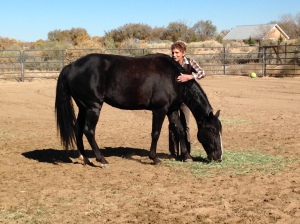 So the way we touch one another and our horses needs to be noted. Since I am a bodyworker, I touch horses in a healing way all the time. When I greet a horse I go up to his nose and offer the back of my hand. Sometimes I stand at his side and place my palm just before his withers. I sometimes drape my arm over the horse’s neck if we are more comfortable with one another, before I ever start working. These methods of connecting by touch can be used by anyone who wants to work with a horse. They are a great introduction.
So the way we touch one another and our horses needs to be noted. Since I am a bodyworker, I touch horses in a healing way all the time. When I greet a horse I go up to his nose and offer the back of my hand. Sometimes I stand at his side and place my palm just before his withers. I sometimes drape my arm over the horse’s neck if we are more comfortable with one another, before I ever start working. These methods of connecting by touch can be used by anyone who wants to work with a horse. They are a great introduction. 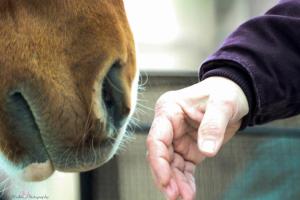
Some horses do not like to be touched. They visibly shrink from your outstretched hand, move away if you come near. Because people very often have work in mind for the horse, a horse that is a “using horse” can be unaccustomed to just gentle touch for the sake of it. You can saddle and bridle them, and swing into the saddle and go cut cattle or go on a trail ride. They definitely know their job, but they are not used to anyone just putting their hands on them. I’ve had this experience, often with ranch horses and horses that need a longer introduction before allowing you in. They are not expecting or asking for a relationship.
Abused or formerly abused horses can be the same way. They are wary, as they have not had pleasant experiences with touch. Relationships with humans are fraught with frightening episodes. They never know where they will end up, what will happen. So much of how horses interact does not involve touch. Their speaking to each other involves body language, a look, a thought. They do also do mutual grooming, bite at each other, kick but they use many other ways of communicating, much like we do. But they can move each other with a look, a thought, such as move now. That’s my food. I want to stand there. Danger is coming, we need to run. 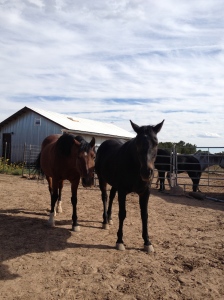 Instead of trying to stroke a horse’s nose when we approach, which would not be the way another horse would approach him, we simply hold out our hand for him to sniff and blow on. Then move back or away. This gives the horse time to digest the introduction and decide if he wants to continue the conversation. When two horses meet, they generally touch noses and move away.
Instead of trying to stroke a horse’s nose when we approach, which would not be the way another horse would approach him, we simply hold out our hand for him to sniff and blow on. Then move back or away. This gives the horse time to digest the introduction and decide if he wants to continue the conversation. When two horses meet, they generally touch noses and move away.
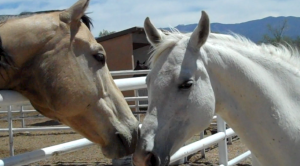
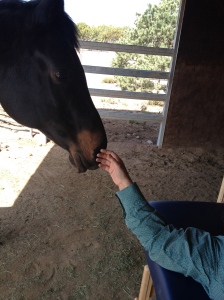 Think about how you like people to introduce themselves to you. Usually, you’re pretty aware of how close they come to you, whether they offer to shake hands with you, whether or not they smile. Usually when we greet someone for the first time, we may step forward and extend our hand and say “hello,” or “nice to meet you.” Some people might place a hand on your shoulder, and you may or may not feel comfortable with that, depending upon what you know about them. If you know someone really well and are friends, you may embrace. It’s all a matter of the relationship, or the desire to build a relationship. Even if you are never going to see the person or the horse again, you still must establish a working relationship for the time you are there, one built on respect and trust. Just as you do in other relationships.
Think about how you like people to introduce themselves to you. Usually, you’re pretty aware of how close they come to you, whether they offer to shake hands with you, whether or not they smile. Usually when we greet someone for the first time, we may step forward and extend our hand and say “hello,” or “nice to meet you.” Some people might place a hand on your shoulder, and you may or may not feel comfortable with that, depending upon what you know about them. If you know someone really well and are friends, you may embrace. It’s all a matter of the relationship, or the desire to build a relationship. Even if you are never going to see the person or the horse again, you still must establish a working relationship for the time you are there, one built on respect and trust. Just as you do in other relationships.
![Atrophy in the gluteal muscles is almost gone. [Catherine Sobredo Photography]](https://horsesatliberty.files.wordpress.com/2012/08/imgp2234.jpg?w=300)
[Catherine Sobredo Photography]
I think of that when I touch someone, although I don’t know their past, present and future, I am touching it. I am saying hello to it somehow. That’s the beauty and grace of it, I only know what they want to show me. That goes for horses as well as humans.
****
Services: Bodywork (Ortho-Bionomy for people, Equine Positional Release/Equine Ortho-Bionomy): private sessions (including Horse & Rider sessions), tutorials, phone consultations, distance healing communication and gift certificates
Liberty Training: clinics, mini-clinics, workshops, private and semi-private sessions, tutorials, consultations: by appointment: 505.501.2478 or emailing susansmith@orthohorse.info Fall Lessons – semi-private, private and small group sessions. Scheduling now. Contact me for details.
New on the schedule for 2014: March 1-2 Horses at Liberty Foundation Training Weekend Clinic, DeLand, Florida. Contact Anne Daimler, tdaimler@cfl.rr.com (386-822-4564) or myself for registration and information. Space is limited. OrthoHorse Tutorial also offered before the clinic: February 28 (see flyers below).
OrthoHorse Tutorials and Horses at Liberty Foundation Training Clinics will be offered on the 2014 schedule. Copyright (c) Susan Smith, OrthoHorse, Horses at Liberty Foundation Training 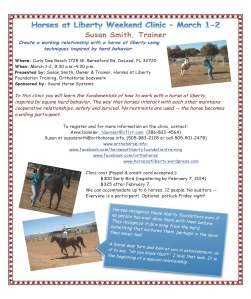
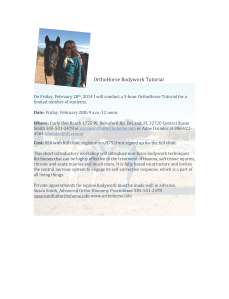



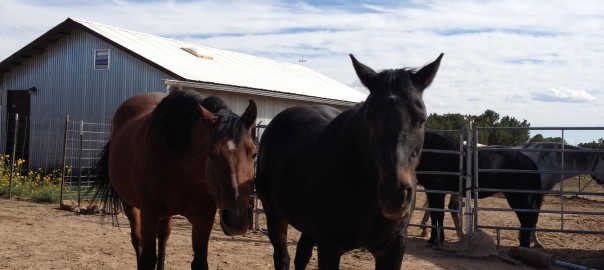
What a beautiful post, Susan. The quality of your touch makes such a difference to horses…and people, too.
I have a horse that does not like a grooming tool used on him. But will let me hand groom. I have idea why. He has been this way for 19 of his 22 years.
Yes, Patricia, it’s great you can use your hands, but harder to get the mud off! I have a mare who hated the grooming tools when I first got her and was much more comfortable with my hands on her body. Over the years, she has gotten used to being groomed with the lighter tools. And my Paint horse gets upset when I go away so when I come back, I can only use my hands and a soft face brush on his entire body.